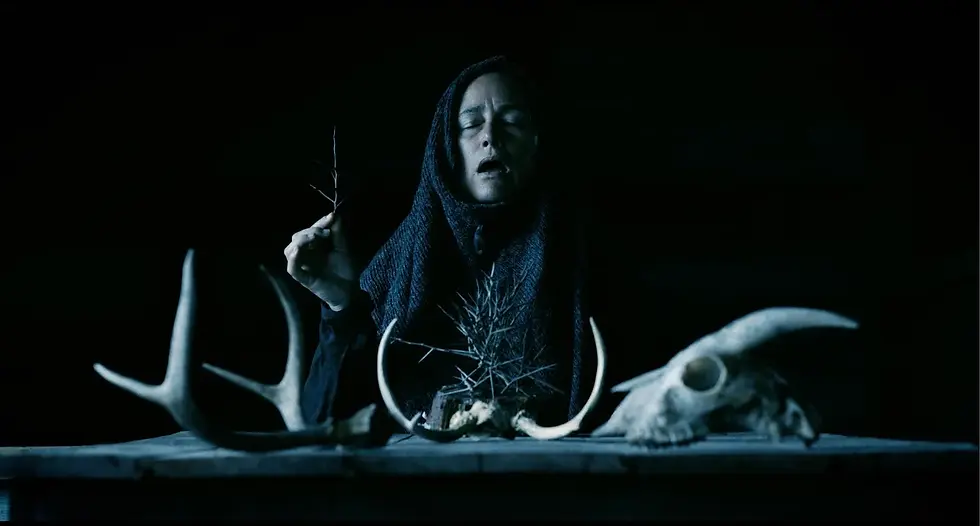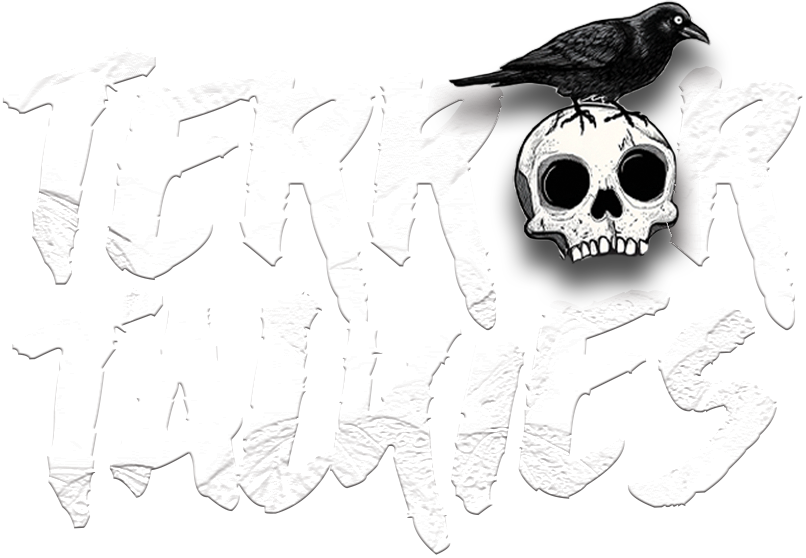Fantastic Fest 2025: 7 Films That Possessed Us.
- Wench Film Festival

- Sep 29
- 4 min read

Appofeniacs
Appofeniacs might be the most disturbingly relevant film of the fest. It follows a group of conspiracy junkies who fall so far down the rabbit hole of connecting meaningless dots that reality itself starts to warp.
At first, it plays like satire; all memes, red string, and manic energy. But as the film progresses, the humour curdles. The screen itself becomes infected by paranoia. What begins as internet absurdity turns into horror about how belief itself can eat you alive.
It’s messy, chaotic, and deliberately overwhelming, but that’s the point. Watching Appofeniacs feels like catching a virus you can’t shake, a perfect metaphor for the digital paranoia it skewers.
Verdict: Chaotic, sharp, and uncomfortably close to home. Horror for the conspiracy age.

Deathgasm 2 : Goremaggedon
The first Deathgasm was gore, metal, and teenage stupidity turned into a cult classic. Deathgasm 2 doesn’t evolve so much as explode. It doubles down on everything: louder riffs, gorier kills, filthier jokes.
The plot is barely there, but that’s not the point. This is a film made for the pit: outrageous kills, practical gore effects, and a constant barrage of metal-fueled chaos. It’s exhausting, yes, but also gleeful in its refusal to tone anything down.
For some, it’ll be too much. For others, it’s exactly what they came for - a live show in hell where the amps are blown, and blood sprays into the crowd.
Verdict: Sloppy, gory, and juvenile in the best possible way. A love letter to metal-heads who like their cinema loud and dripping.

Dolly
Dolly is a nightmare stitched out of childhood fears and grindhouse grit. At first glance, it’s a slasher about a doll come to life but director Rod Blackhurst pushes it further into grotesque emotional territory. Dolly doesn’t just kill; Dolly mothers, Dolly consumes, Dolly devours.
The film’s grainy, pulpy aesthetic harks back to ‘70s exploitation cinema, while Max the Impaler gives a performance that is both terrifying and tragic. The violence is graphic, but it’s not empty spectacle. Behind the gore is an exploration of twisted motherhood, of the suffocating hunger to belong and control.
Not every beat lands and the tone veers wildly between surreal camp and visceral horror —but when Dolly finds its rhythm, it’s unforgettable. The final act in particular leaves an aftertaste of iron and ash, like a lullaby sung through broken teeth.
Verdict: Messy, bloody, and deeply unsettling. Dolly transforms a horror cliché into a feral scream about love and possession.

Fuck My Son!
Todd Rohal’s Fuck My Son! is designed to provoke. The title itself is a dare, and the film never relents. Somewhere between horror, comedy, and grotesque performance art, it tells the story of a domineering mother, her mutant son, and the women who get caught in their orbit.
It’s vulgar, absurd, and often hilarious in the worst ways. Every scene feels like a test: will you laugh, gag, or walk out? That line between disgust and laughter is the real horror. Rohal weaponizes bad taste until it becomes something like commentary, a mirror held up to our appetite for the shocking and the obscene.
The film is not “good” in any conventional sense, but that’s beside the point. Its value lies in the discomfort it generates, in how it forces you to confront your own thresholds. Some will despise it. Some will champion it as midnight cult cinema. Everyone will react.
Verdict: A grotesque carnival ride of filth and satire. You’ll either storm out or cackle through the horror. Either way, it wins.

Mother of Flies
The Adams family (of Hellbender fame) return with a hypnotic, insect-ridden meditation on grief. Mother of Flies is not a film of jump scares or easy answers. It’s a buzzing, crawling dirge where illness, ritual, and memory bleed into one another.
Nature is the true co-star here: forests, wood, blood, insects. The camera treats them not as backdrop but as living, breathing characters. A father and daughter relationship provides the emotional core, but the narrative keeps mutating, refusing to be pinned down. One moment it’s about illness, the next about folklore, then about desire.
This refusal to settle will frustrate some viewers and the pacing is deliberate, almost punishing. But for those willing to sit in its unease, Mother of Flies becomes something unforgettable: a horror film where the scariest thing isn’t death, but the persistence of grief itself.
Verdict: A fever dream of loss and decay. Patient, punishing, and beautiful in its rot.

Sisu: Road to Revenge
Jalmari Helander’s sequel to Sisu dials everything up to eleven. Nazis are out, Soviets are in, but the formula remains: Aatami Korpi, played with mythic ferocity by Jorma Tomilla, is a one-man army fueled by vengeance.
The plot is skeletal - family tragedy, homeland invaded, revenge demanded. But story isn’t the point. What matters are the set-pieces: snow stained red, bodies exploding in choreography that feels equal parts action cinema and heavy metal album cover.
Korpi is no longer a man; he’s folklore, he’s punishment, he’s the bogeyman with a knife. The violence is so outrageous it borders on comedy, but that absurdity is part of its charm.
Verdict: A blood-soaked, metal-as-hell revenge saga. Relentless, loud, and proud of it.

The Vile
Majid Al Ansari’s The Vile is the kind of film that lingers like a bruise. What begins as a story of domestic disruption; a man bringing a younger second wife into his home quickly spirals into suffocation. The first wife, Amani, played with a raw, unraveling energy by Bdoor Mohammed, becomes the vessel for the film’s horror. Flowers wilt, birds die, reality bends. What looks like a melodrama twists into something uncanny.
At its core, The Vile isn’t about ghosts or monsters. It’s about the violence of erasure, the quiet cruelty of being replaced, and the suffocating demand to accept it. The horror here is systemic, rooted in polygamy, patriarchy, and the way women are turned into shadows in their own homes.
The film is deliberately disorienting, blending dream sequences, hallucinations, and metaphor-heavy visuals that leave the viewer off balance. Some may find it too opaque, but that opacity mirrors Amani’s unraveling; there’s no safe ground, no solid truth.
Verdict: A haunting domestic horror where patriarchy itself is the monster. Unsettling, claustrophobic, and impossible to shake.




Comments